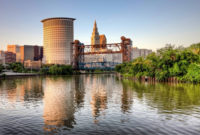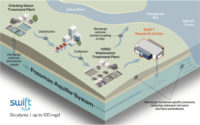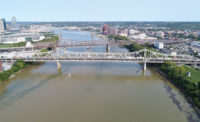The U.S. Environmental Protection Agency plans to invest hundreds of millions of dollars over the next five years to launch a series of actions in Puerto Rico that will begin to address some of the environmental problems in communities disproportionately affected by pollution and two major hurricanes.
EPA’s plans include providing $78 million annually for the next five years for water infrastructure and water quality improvements, closing illegal landfills, and investing $4.5 million over five years to clean up the polluted San Juan estuary.
The most pressing need is to assist in disaster recovery efforts, according to EPA officials on a Nov. 3 press call. These include supporting the U.S. Energy Dept., U.S. Army Corps of Engineers, Federal Emergency Management Agency and the government of Puerto Rico in efforts to stabilize the island’s power system; and evaluating the conditions of landfills in the aftermath of Hurricane Fiona.
Puerto Rico has struggled since fall 2017 to restore its electrical grid in the aftermath of Hurricane Maria, which was further hobbled when Hurricane Fiona pummeled the island in September. Electrical blackouts are common, and congressional leaders raised questions this fall about the funds already allocated for recovery efforts that have not been touched.
“In the coming months, we are focused on ensuring not only that Puerto Rico has the resources to recover from the hurricane, but also provide solutions that encourage long-term sustainability,” said EPA Administrator Michael S. Regan. The actions announced Nov. 3 stem from discussions and visits to Puerto Rico as part of EPA’s Journey to Justice program—which puts a spotlight on regions with environmental justice concerns—Regan noted.
EPA officials on the call said traditionally underserved communities have borne the brunt of both environmental hazards and major storms in Puerto Rico, as in many other places.
The annual $78 million in Infrastructure Investment and Jobs Act (IIJA) funding for water infrastructure will include projects to replace lead pipes, address emerging contaminants such as PFAS, and build more resilient drinking water and wastewater systems.
EPA also is investing $100,000 for two pilot projects to collaborate with the Puerto Rico government and local nonprofits. One involves sampling groundwater in southern Puerto Rico near sites where coal-fired plants have traditionally been sited; the other will test air quality in nearby communities.
The agency’s Region 2 office will provide technical assistance to help a team of community leaders responsible for managing and operating small, community-run drinking water systems map and assess capacity and drinking water needs, and apply for funding to build the needed infrastructure.
“The actions we are talking about … are only a fraction of what’s needed,” Regan said. “I recognize, especially in the aftermath of Hurricane Fiona, that the road ahead looks longer than it should.”






Post a comment to this article
Report Abusive Comment